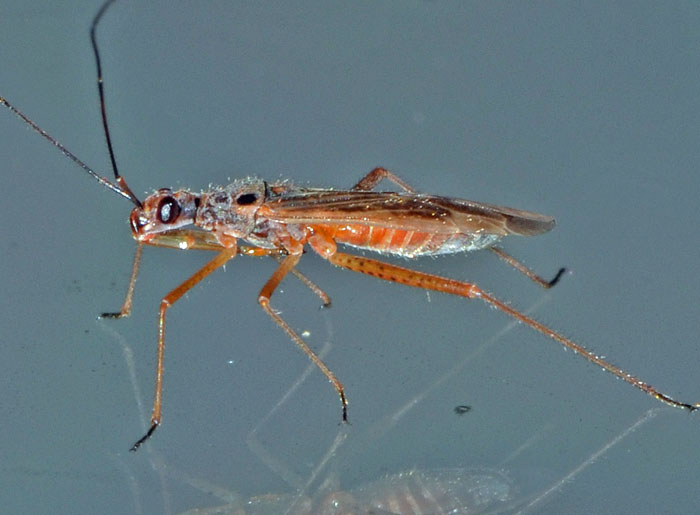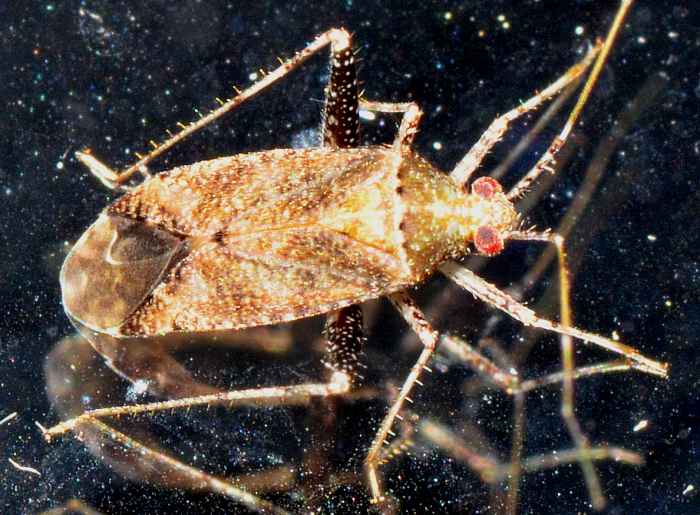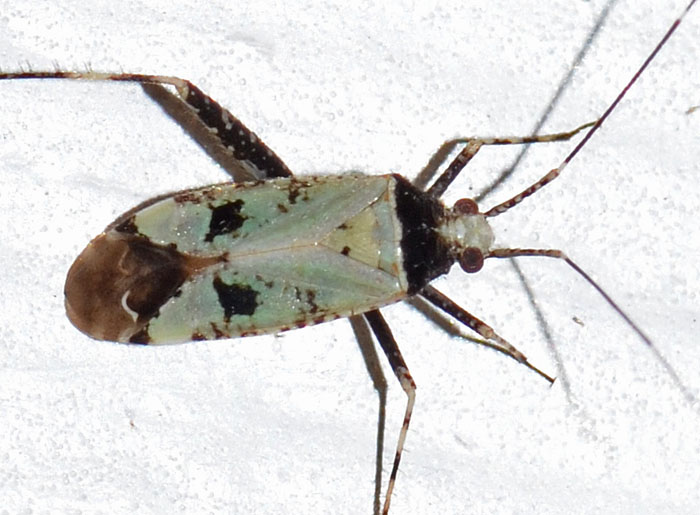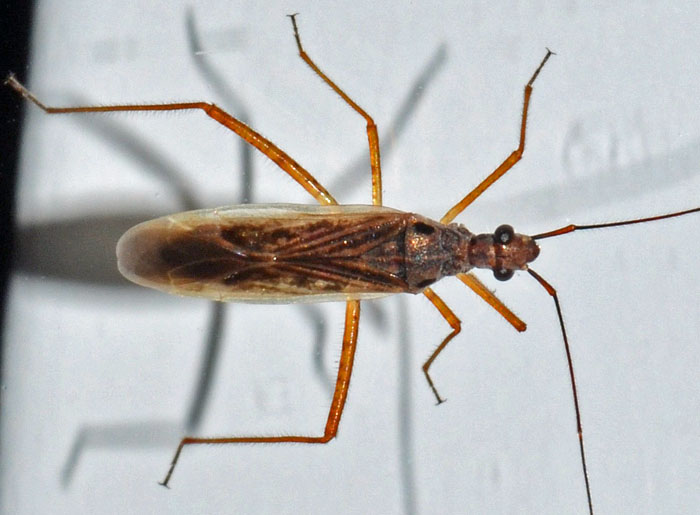 Collaria oculata. | Collaria oculata is one of three species in North America. It can be found in the eastern half of the US and prefers fields and meadows as it feeds on grasses. The photo below shows a lateral view of the same specimen.
bug guide (these photos): http://bugguide.net/node/view/690675 | ||
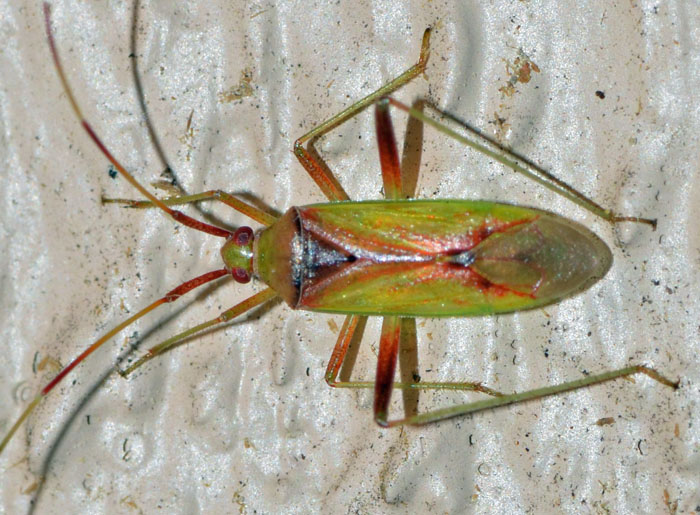 Creontiades sp.. | The genus Creontiades belongs to the Tribe Mirini and has about 60 species worldwide but only three in North America. My best guess is that this seed bug is Creontiades rubrinervis.
bug guide (this photo): http://bugguide.net/node/view/234240 | ||
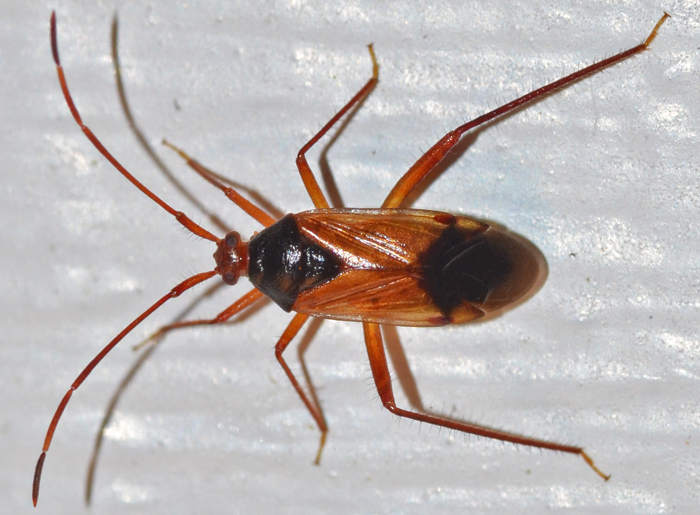 Eustictus pilipes. | The species name E. pilipes derives itself from Latin "pili" (hair) and "pes" (foot) and refers to the long hairs on the bugs' legs (click on the image to see a larger version in which the hairs are more visible). They are found nearly exclusively in Florida.
bug guide (this photo): http://bugguide.net/node/view/1224959 | ||
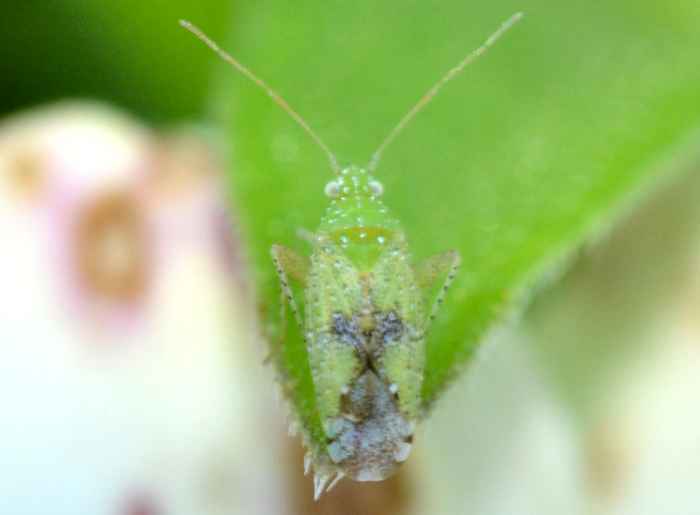 Keltonia tuckeri. | This tiny plant bug is Keltonia tuckeri. There is a bit of a question mark behind the species identification because I couldn't find photos of the other species. bug guide (this photo): http://bugguide.net/node/view/574555 L. A. Kelton, The Canad. Entomol., 96, 668, 1966: http://pubs.esc-sec.ca/doi/abs/10.4039/Ent98668-6 | ||
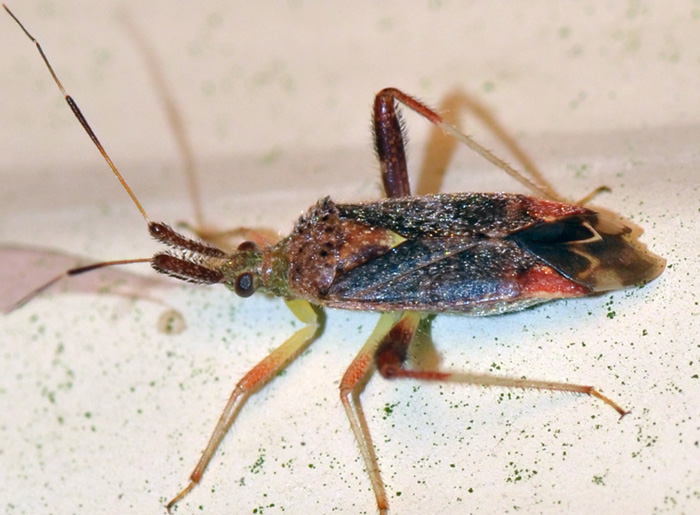 Neurocolpus sp.. | Neurocolpus species are common in North America. The flattened hairs on the thickened antennomere 1 are characteristic. They are associated with various plants including buttonbush and basswood. Adults visit flowers and are attracted to lights.
bug guide (this photo): https://bugguide.net/node/view/1665470 | ||
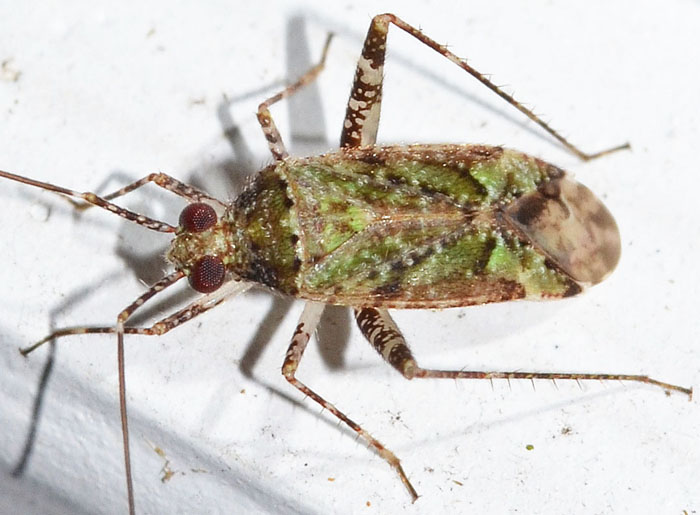 Phytocoris sp.. | The plant bug genus Phytocoris has about 300 species in North America, which are divided into four different "groups". The wing membrane of bugs in Group I is "confusedly sprinkled with discolored or dark spots, or with numerous, minute, pale spots", which seems to be a pretty good description of this specimen. The other three groups do not have minute, pale spots.
The small photos show a specimen with a seemingly less elongated body (04/17/12) and paler one (08/27/14).
bug guide (yet another specimen from my yard): http://bugguide.net/node/view/595628 | ||
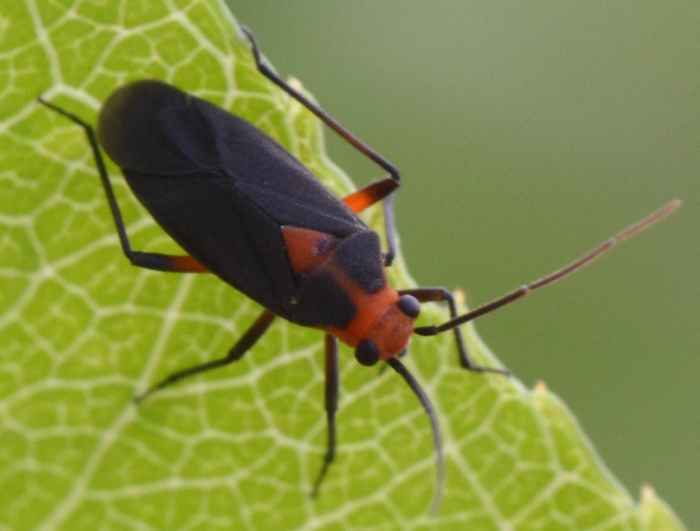 Prepops sp. (?). | The experts on bugguide identified this plant bug only down to the tribe level (Resthenini). I went a step further and guess Prepops sp. Photo identification of the bugs in Resthenini is difficult due to strong color variations. The genus Prepops has currently 22 species in North America but is seemingly in need of revision; the tribe has four genera. bug guide (this photo): http://bugguide.net/node/view/575586 | ||
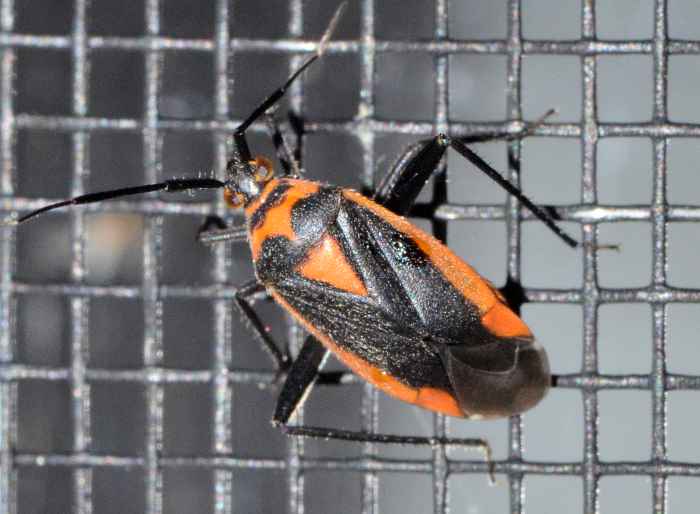 Taedia sp.. | This plant bug belongs to the genus Taedia which has 27 species in North America. A good possibility is Taedia externa. bug guide (this photo): http://bugguide.net/node/view/628645 | ||
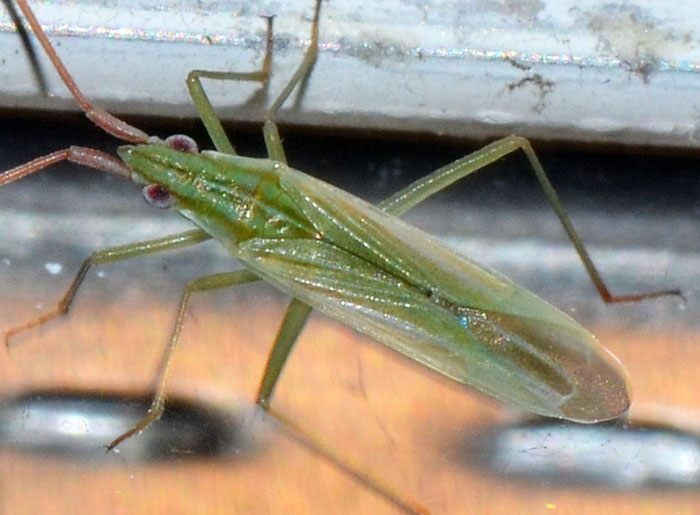 Trigonotylus caelestialium (Rice Leaf Bug). | The Rice Leaf Bug (Trigonotylus caelestialium) has elongated, reddish stripes at the base of their antennae, which are typical of this species. It is frequently studied in the scientific literature, especially in investigations focussing on its pheromones. bug guide (this photo): http://bugguide.net/node/view/685917 |

